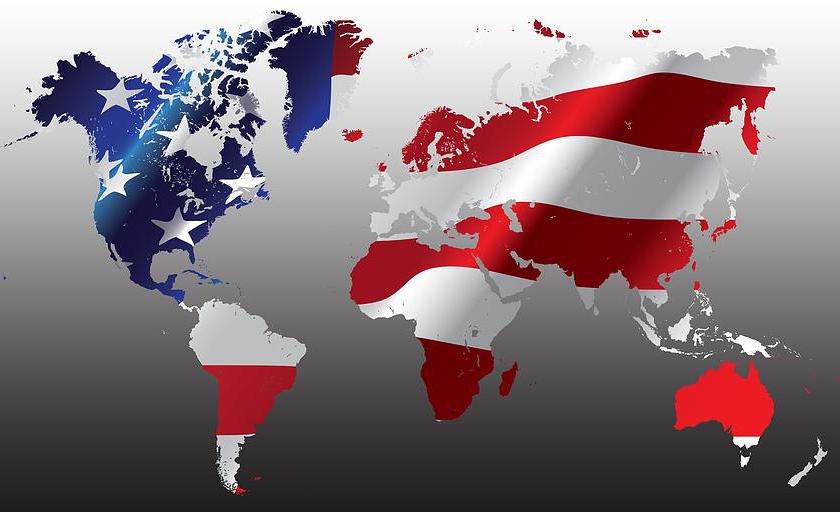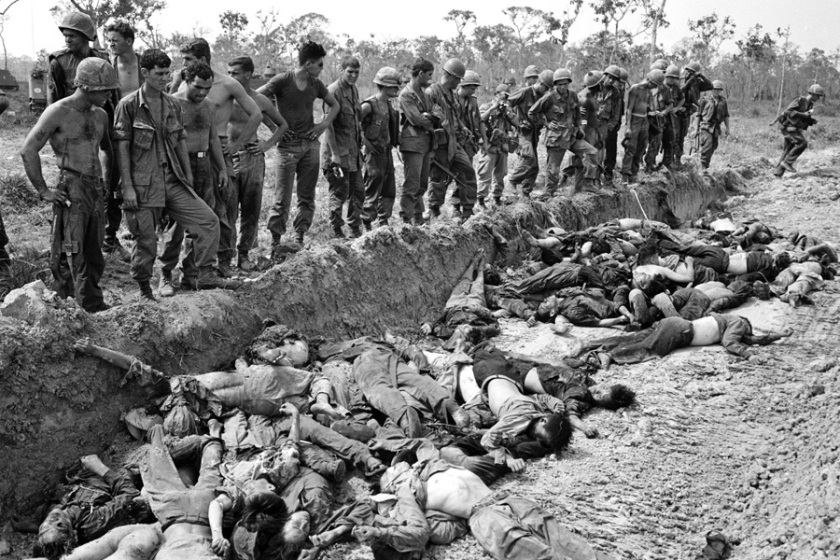
Views: 718
On July 9, 2006, the U.S. Army charged five US soldiers with the rape and murder of a 14-year-old Iraqi girl, Abeer Qasim Hamza al-Janabi, and the murder of her parents and 5-year-old sister. This brutal and senseless war crime raises the issue of rape in war. The lynchpin of US propaganda and infowar spin is that Soviet troops raped German women when the Red Army took Berlin in 1945. This was meant to take away from the Russian military achievement in taking Berlin. The Russian soldiers were “rapists” while US soldiers were “liberators”, handing out chocolate bars, chewing gum, and cigarettes.
Rape as “an instrument of war” was the US propaganda line against the Bosnian Serb troops during the Bosnian civil war of 1992-1995 and during the 1998-1999 Kosovo separatist conflict.
But why is there no history of mass rapes committed by US soldiers in wartime? Why is this data and information totally and completely censored and covered-up? And by whom? Who has falsified and censored the facts?
We witnessed a startling example of rape committed by US troops during the Kosovo conflict.
A US peacekeeper, US Staff Sgt. Frank Ronghi, who was part of the KFOR team, the “peacekeeping forces”, seized, tortured, and brutally raped and murdered an 11-year-old ethnic Albanian girl in Kosovo. He rationalized the murder on the grounds that he would blame the Serbs for it. He told other KFOR peacekeepers that he wanted to “grab a little girl and rape her, but he would have to kill her to get away with it and blame the Serbs.”
A US soldier committed a brutal rape against an 11-year-old Albanian girl from Kosovo and blamed it on the Serbs. Is this the only case of US soldiers committing rape? Who has deleted this history? Why is it suppressed?
Northern Kentucky University Regents Professor of Sociology and Criminology, J. Robert Lilly, has researched rapes committed by American soldiers in Europe during World War II. This is a topic that has been very meticulously covered-up and censored in US history. Lilly could find no English-language publishers for his book. He planned to publish the book in 2001. English-language publishers rejected the manuscript following 9/11. The book was published in a French translation in 2003. The topic of US rapes during wartime was censored. Rape is something only Serb and Russian soldiers do.
The cover-up and censorship were needed to provide a cover, “an ethical blank check”, or smokescreen for US military interventions in Bosnia, Kosovo, Afghanistan, and Iraq. The War Party and the interventionist ideologues needed this myth and falsification. This is why censorship was required. In totalitarian states, censorship works by government bans on offensive topics, ideas, and publications. In so-called democracies, censorship is more subtle and sophisticated. The information is just not made available. The data is ignored or de-emphasized. This is a subtle propaganda technique known as Emphasis. The information is not banned, merely ignored. The result, however, is the same in both cases: The information is suppressed.
In his book “Taken by Force: Rape and American Soldiers in the European Theater of Operations, WWII”, Lilly examined the “ugly underbelly” of the US myth and lie and conceit of “the greatest generation” and “the band of brothers”. Lilly examined cases involving rape committed by US troops from 1942 to 1945 in Europe.
Lilly argued that his research would explain the alleged rape of the 14-year-old Iraqi girl near Mahmoudiya, Iraq in March, 2006 by four US troops, who subsequently murdered her father, mother, and 5-year-old sister, execution-style. Steven Green, the principal defendant, a high school dropout who joined the US Army in February, 2005, was a member of the 101st Airborne Division.
Lilly sees the crux of the problem to be low recruitment and training standards. The problem is that we have “weekend soldiers” and National Guard volunteers in Iraq.
Lilly explained the rationale for his research and the need to set the record straight on World War II:
“We wrote a very vainglorious portrait of what we did. If we had fighting on our own soil, if we had seen destruction here, if we had experienced murder, theft and rape here, I don’t think we would have glorified the war as much…. I was trying not to make it political. It’s just a study of rape in wartime.”
Lilly examined the US military archives and trial transcripts to analyze rapes committed by US forces in England, France, and Germany. He discussed the issue of the “crime of rape” and “wartime rape”. He examined the rapes committed in England in the chapter “England: White Women”. The rapes in France were analyzed in the chapter “France: Breaking and Entering”. The rapes in Germany were examined in the chapter “Germany: Operation Plunder”. Finally, he analyzed “wartime justice” in the “context” of US racism. Punishment for rape depended on race. Rapes of white women by black US troops were punished severely.
Lilly examined records of cases tried by the US military courts. He found that there were 121 rape victims in England, 181 in France and 552 in Germany. In the UK and France, these were rapes committed by US soldiers in allied countries. He estimated that “American soldiers could have raped as many as 17,080 women in the European theater” because only about one in 20 rape victims reports the crime.
Lilly found that the US Army executed 70 soldiers in Europe convicted of rape “but none of them was convicted of raping German women”. Did the US military condone the rape of German women?
Lilly also found that the death penalty was handed out to black soldiers at a ratio of two to four times that handed out to white soldiers. Lilly concluded that this discrepancy was based on institutionalized and systemic racism prevalent in the US at that time: “military prosecutors felt more outrage at a black man raping a white woman, and so prosecuted this crime with more zeal.”
US troops engaged in widescale rape not only in Europe, but in Asia as well.
In Okinawa, US troops are estimated to have raped 10,000 Japanese women during World War II. After World War II, 300 “sex crimes” were committed by US troops. From 1945 to 1950, 278 rapes were reported to have been committed by US troops on Okinawa based on police reports, including the rape of a nine-month-old Japanese girl in 1949. In 1955, a US soldier kidnapped, raped, and murdered a six-year-old Okinawa girl. Since 1972, 130 rapes by US occupation troops have been reported in Okinawa.
In 1996, three US servicemen were convicted of the rape of a 12-year-old Okinawa girl. In 2002, US Air Force Staff Sergeant Timothy Woodland was convicted of raping an Okinawa woman.
US troops have been accused of rapes in the Philippines.
A June 1, 2000 New York Times report “refocused attention on what historians say is one of the most widely ignored crimes of the war, the widespread rape of Okinawan women by American servicemen.” This is what was covered-up and censored:
“As many as 10,000 Okinawan women may have been raped, one scholar estimates. Rape was so prevalent in the months following US subjugation of the island that most Okinawans over age 65 either know or have heard of a woman who was raped in the aftermath of the war. Marine Corps officials say they have no records of such mass rapes, but books, diaries, newspaper articles and other documents refer to rapes by American soldiers of various races and backgrounds. Apparently few if any Okinawan women reported being attacked out of fear and embarrassment, and those who did were ignored by the US military police.”
In 2000, the bodies of three US Marines killed in World War II on Okinawa were identified. They had been killed in 1945 by Japanese civilians and Japanese troops after they had raped Japanese women on Okinawa. Japanese residents reported at the time that there were “a large number of rapes committed in the area by U.S. servicemen”.
Estimates of rapes committed by US soldiers during World War II thus are estimated at 17,080 in Europe and 10,000 in the Pacific. This is something that is very carefully censored and covered-up in US academic scholarship and the historiography of World War II.
A September, 1945 Time Magazine report gave an accurate account of the U.S. experience on rape and war:
“Our own army and the British army along with ours have done their share of looting and raping … we too are considered an army of rapists.”
Edgar L. Jones, an American war correspondent and veteran in the Pacific theater, summarized the US experience of war against Japan in the February, 1946 Atlantic Monthly antiwar article “One War is Enough”:
What kind of war do civilians suppose we fought anyway? We shot prisoners in cold blood, wiped out hospitals, strafed lifeboats, killed or mistreated enemy civilians, finished off the enemy wounded, tossed the dying into a hole with the dead, and in the Pacific boiled flesh off enemy skulls to make table ornaments for sweethearts, or carved their bones into letter openers. … [W]e mutilated the bodies of enemy dead, cutting off their ears and kicking out their gold teeth for souvenirs, and buried them with their testicles in their mouths, but such flagrant violations of all moral codes reach into still-unexplored realms of battle psychology.”
Not only has US historiography glorified war. The experience of war has been falsified and distorted into a delusional mythology of war. Self-delusion and a state of denial result in “the good war”. You have to engage in self-delusion to perceive any war, which is organized mass murder, as good.
Originally published on 2006-10-25
Author: Carl K. Savich
Source: Serbianna
Origins of images: Facebook, Twitter, Wikimedia, Wikipedia, Flickr, Google, Imageinjection & Pinterest.
Read our Disclaimer/Legal Statement!
Donate to Support Us
We would like to ask you to consider a small donation to help our team keep working. We accept no advertising and rely only on you, our readers, to keep us digging the truth on history, global politics and international relations.













